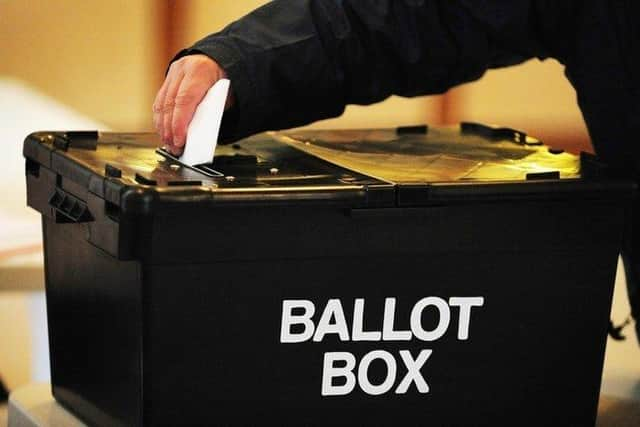Countdown to polling day is on across Falkirk district
and live on Freeview channel 276
In the two constituencies covering Falkirk district there are 12 people all looking to head to Westminster after the December 12 ballot.
But only two will make it when the results are announced in the early hours of the following day.
Advertisement
Hide AdAdvertisement
Hide AdThe four main parties – Conservative, Labour, Lib Dems and SNP – along with the Greens are contesting Falkirk, while Linlithgow and East Falkirk has candidates from these parties along with Brexit Party and Veterans and People’s Party.


Both constituencies elected Scottish National Party MPs in the last general election, held in June 2017.
The SNP took the largest share of the vote – 37.6 per cent in total, ahead of Labour with 30.5 per cent and the Conservatives with 27.7 per cent.
There was a similar picture in the European Parliament elections this May, the most recent occasion on which the country went to the polls, when the SNP took 43 per cent of the vote in Falkirk’s local authority area, the largest share.
Advertisement
Hide AdAdvertisement
Hide AdThe Brexit Party finished second, with 17 per cent, and Labour third with 9.8 per cent.
Turnout was, however, much lower in those elections – while 65.3 per cent of the electorate came out to vote across the two constituencies in 2017, just 35.6 per cent did in the local authority for the European Parliament elections this year.
There are concerns that a snap General Election two weeks before Christmas may also disuade voters from going to the polls.
The last time there was a General Election in this month was 1923.
Advertisement
Hide AdAdvertisement
Hide AdAlmost two decades ago when there was a December by-election in the former Falkirk West constitutency, caused by the resignation of Dennis Canavan, the turnout was low.
On December 21, 2000 the number of people who went to the ballot box was half what it had been in the General Election of 1997.
Eric Joyce was returned for Labour with 8492 votes, 700 more than the SNP’s David Kerr. But only 36.1 per cent of the electorate voted, compared to 72.6 per cent three and a half years earlier.
Brexit is expected to dominate this year’s election.
Many commentators think that a decision between leaving and remaining in the European Union will form the basis for many voters’ choices in polling booths this year, rather than traditional party lines.
Advertisement
Hide AdAdvertisement
Hide AdThe major parties have each made significantly different pledges for the UK’s departure.
While the Conservatives have said they will push through a departure on the terms of the deal Prime Minister Boris Johnson has negotiated, the Labour Party has said it will agree a closer alignment with the EU and hold a second referendum on its deal against the option to remain.
The Liberal Democrats have pledged to immediately revoke Article 50, keeping the UK in the EU, while the Brexit Party will pursue a “no-deal” departure.
Meanwhile, the SNP are campaigning to prevent Brexit and keep Scotland in the single market and customs union. They support a second EU referendum with Remain as an option.
Candidates for Falkirk are:
n Safia Ali (Scottish Labour Party)
n Tom McLaughlin (Scottish Green Party)
n Johnny McNally (Scottish National Party)
n Lynn Munro (Scottish Conservative and Unionist)
n Austin Stanley Reid (Scottish Liberal Democrats)
Advertisement
Hide AdAdvertisement
Hide AdCandidates for Linlithgow and East Falkirk constituency are:
n Marc Bozza (Brexit Party)
n Martyn Day (Scottish National Party)
n Charles Kennedy (Scottish Conservative and Unionist)
n Gillian Mackay (Scottish Green Party)
n Wendy Milne (Scottish Labour Party)
n Sally Pattle (Scottish Liberal Democrats)
n Mark Tunnicliff (Veterans and People’s Party).